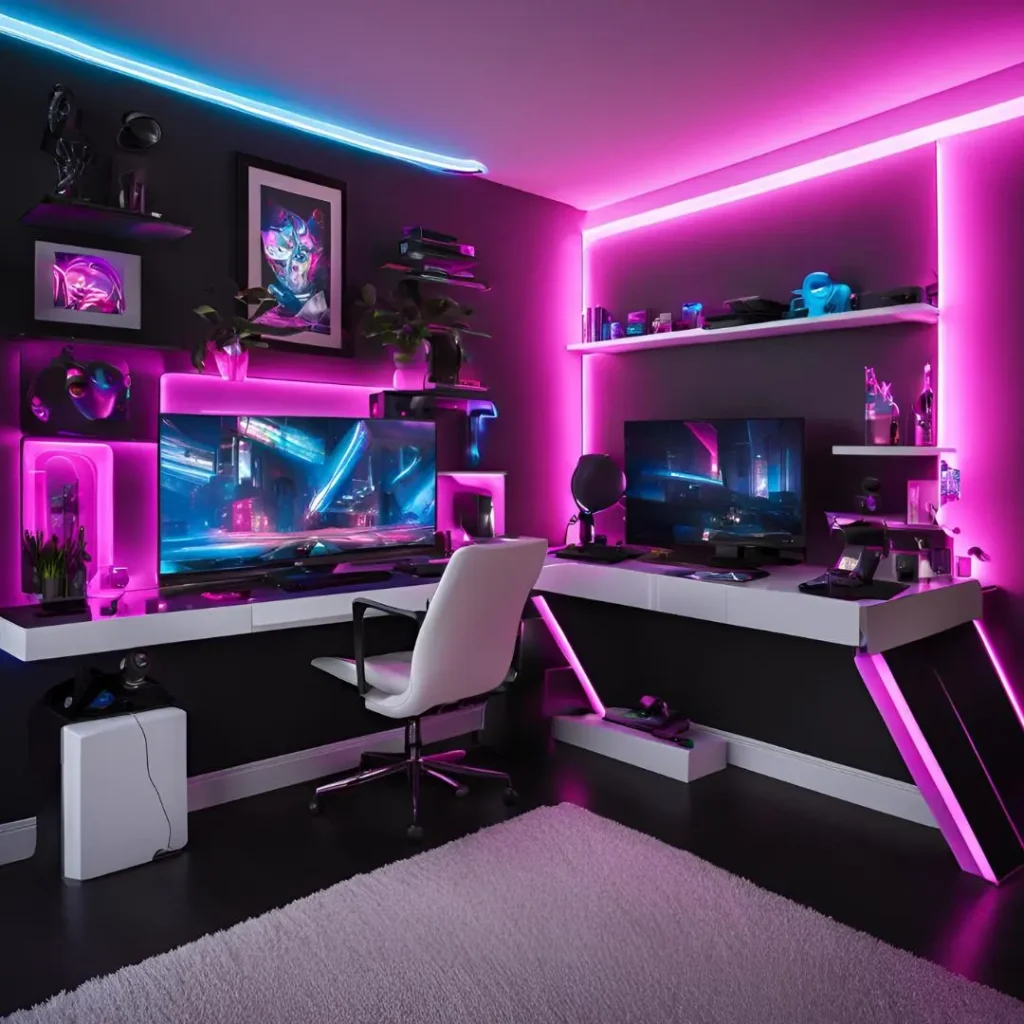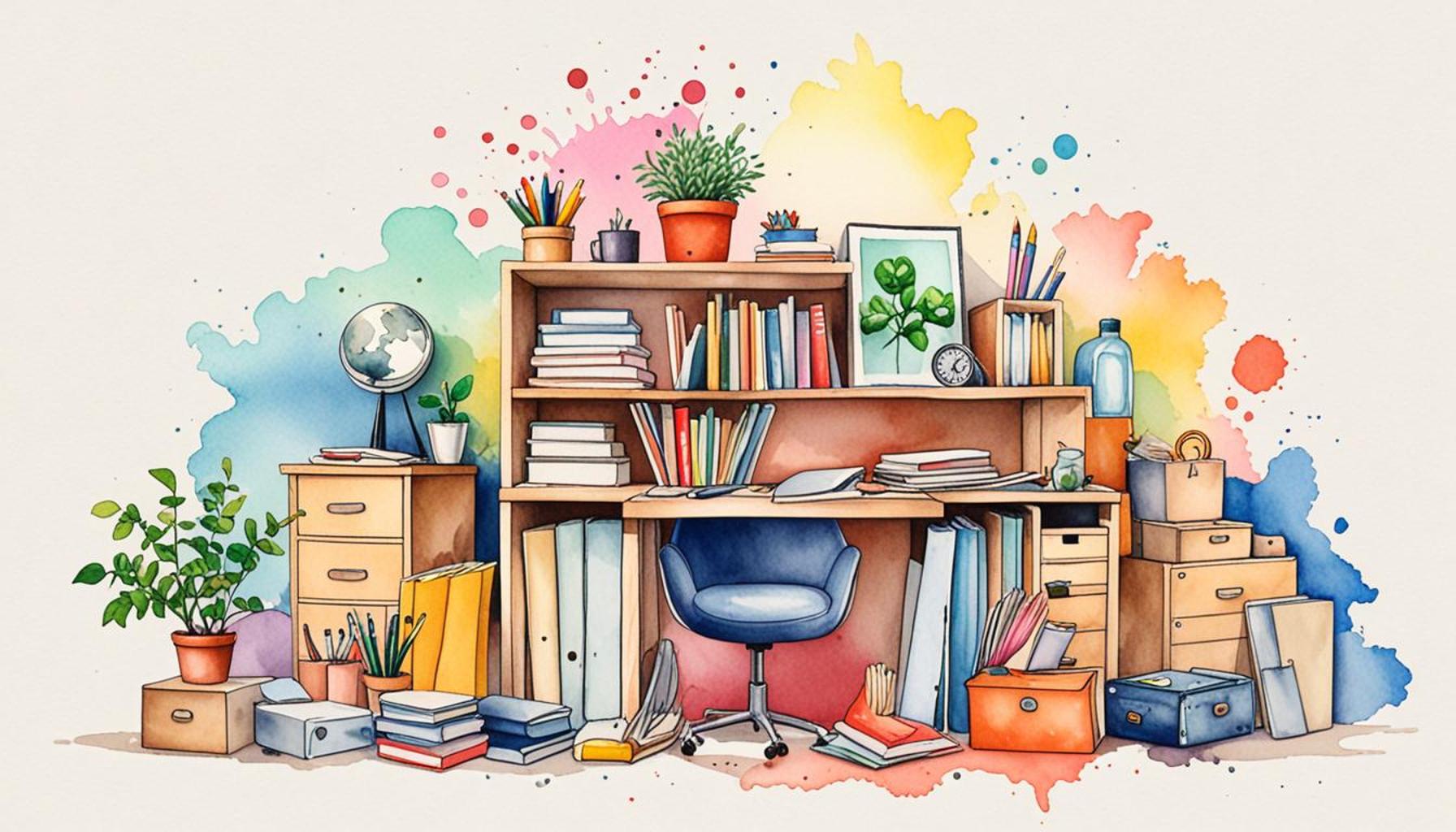The Art of Letting Go: Space Optimization Techniques to Create More Pleasant and Organized Environments

In a world where the fast pace of life often overshadows the importance of simplicity, the impact of clutter on our mental and physical well-being cannot be overlooked. Clutter can create a chaotic environment, leading to distractions and a sense of disorganization. It’s a common struggle faced by many, whether a busy professional with a home office overflowing with paperwork or a family navigating the challenges of daily life in a crowded living space. Thus, letting go of excess possessions is not merely a matter of aesthetics; it is a vital step toward achieving tranquility and efficiency in our daily lives.
Why It Matters
Understanding the significance of space optimization can transform the way we approach our living and working areas. The benefits are plentiful, and they can significantly enhance our quality of life:
- Enhanced focus and productivity: When your environment is organized, your mind reflects that clarity. Studies indicate that less clutter can lead to improved concentration levels, enabling individuals to tackle tasks more efficiently. For instance, a tidy desk can help a student engage more effectively in their studies.
- Reduced stress levels: Clutter can serve as a psychological burden, causing anxiety and stress. Removing unnecessary items creates a sense of control and relaxation. Researchers have found that individuals working in a clean, organized space report lower stress levels compared to those in cluttered environments.
- Improved aesthetics in living and working spaces: Attractive spaces can enhance mood and well-being. An open, minimalist room can facilitate creative thought, making it easier to connect with one’s work or family. Homes and offices designed with a sense of simplicity often reflect a peaceful ambiance.
By employing space optimization techniques, anyone can reshape their surroundings into more inviting and functional environments. This journey goes beyond simply discarding items; it involves a thoughtful evaluation of what truly enriches our lives.
Techniques to Explore
There are several effective strategies to help you minimize clutter and maximize space:
- The 80/20 rule: This principle suggests that 80% of our usage comes from just 20% of our belongings. Start by assessing your items and identify those that genuinely serve a purpose or bring joy. You may find that you can donate or discard a significant portion of unused items.
- One in, one out: This habit advocates that for every new item brought into your space, an existing one must be removed. This fosters mindfulness regarding purchases while also helping to prevent excess accumulation.
- Utilizing vertical space: Think creatively about storage solutions that go upwards. Shelving, hooks, and wall-mounted organizers can help free up floor space, making rooms feel larger and more open. This is especially useful in apartments or homes where space is limited.
Embarking on the journey to let go fosters not only a more organized atmosphere but also cultivates a mindset geared toward mindful living—an exploration of what we truly need versus what we merely have. In doing so, we elevate our surroundings, allowing our environments to enhance our lives rather than hinder them.

DISCOVER MORE: Click here to learn about mindful shopping
Embracing Minimalism in Everyday Life
The concept of minimalism has gained traction in recent years, resonating particularly well with those seeking clarity amid the chaos of modern living. At its core, minimalism revolves around the idea of simplifying one’s life by prioritizing experiences and relationships over material possessions. By embracing a minimalist approach, individuals can create environments that not only enhance functionality but also foster mental serenity. This shift is particularly relevant in today’s fast-paced society, where distractions abound, and the pressure to keep up seems relentless.
To fully appreciate the art of letting go, it is essential to understand the psychological implications of our possessions. According to a study published in the journal Environment and Behavior, cluttered spaces can elevate cortisol levels—often referred to as the “stress hormone.” This elevation can lead to anxiety, tension, and an overall diminished sense of well-being. Therefore, the journey toward space optimization is not merely about aesthetics; it is fundamentally about cultivating a more harmonious state of mind.
Assessing Your Relationship with Possessions
Before diving into organizational techniques, reflecting on your relationship with your belongings is crucial. Ask yourself the following questions to aid in this evaluation:
- Do I use this item regularly, or has it become an unnecessary burden?
- Does this possession spark joy or serve a meaningful purpose in my life?
- Am I holding onto this out of obligation or sentimental value rather than genuine utility?
Answering these questions allows for a more objective evaluation of your items and helps foster a mindset that embraces letting go. This process supports the notion that not all belongings need to be kept forever, paving the way for a more liberating lifestyle.
Creating an Efficient Decluttering Strategy
As you embark on your decluttering journey, implementing effective strategies can significantly ease the process. One popular method is the KonMari Method, developed by Marie Kondo, which encourages you to keep only those items that “spark joy.” This method combines a unique approach with practical steps, allowing you to evaluate each item in your possession and decide which to retain based on its emotional impact.
In addition to this, consider segmenting your decluttering process into manageable tasks. Focus on one room or area at a time, which can prevent feelings of overwhelm and allow for a sense of accomplishment as you see tangible results. Creating designated categories—such as “keep,” “donate,” and “discard”—can further simplify the choice-making process. This way, you maintain control over your environment, minimizing stress and maximizing clarity throughout your space.
Ultimately, embarking on a journey of letting go can lead to a transformative experience. By adopting space optimization techniques, you not only cultivate a more organized environment but also foster a mindset of mindfulness—one that prioritizes well-being over clutter. In this way, the art of letting go becomes a powerful tool in creating spaces that elevate your quality of life.
| Advantage | Explanation |
|---|---|
| Enhanced Productivity | A decluttered space can lead to improved focus and efficiency, allowing individuals to concentrate better on their tasks. |
| Stress Reduction | An organized environment contributes to a sense of calm and control, which can alleviate anxiety and promote mental well-being. |
Embracing the fundamentals of *space optimization* opens up pathways to both mental clarity and practical functionality in everyday life. The Art of Letting Go transcends mere physical decluttering; it steers individuals toward an enriched lifestyle, empowering them to make intentional decisions about what occupies their space. For instance, implementing techniques such as the 25-item challenge can serve as an engaging way to assess and release unnecessary possessions, allowing for a cleaner and more energized environment. Furthermore, practices like the Marie Kondo method invite individuals to check whether belongings “spark joy,” ensuring that their surroundings not only look good but also resonate on a personal level. Investing in structured storage solutions also plays a crucial role, maximizing vertical space and ensuring everything has a designated spot, leading to seamless organization. The ripple effect of these actions fosters a lifestyle that prioritizes mindfulness, productivity, and overall happiness. By adopting these transformative space optimization techniques, you’re not just reshaping your environment; you’re reshaping your life. Explore further to uncover more strategies that can lead you to a more organized existence.
DIVE DEEPER: Click here to discover more
Strategies for Sustainable Organization
As the journey of letting go unfolds, it is vital to establish strategies that promote a sustainable level of organization within your space. Creating habits to maintain the decluttered environment can ensure that you don’t fall back into old patterns of accumulation, which can quickly constrict the serenity you have cultivated. One highly effective approach is the one-in-one-out rule. This principle dictates that for every new item you bring into your space, you must remove one existing item. This helps maintain balance and prevents the cycle of clutter from beginning anew.
Moreover, consider the 12-12-12 challenge, a creative decluttering method that challenges you to find twelve items to donate, twelve to discard, and twelve to keep. This can easily be a fun, family-friendly activity that fosters teamwork in achieving a more organized home. While it may only seem effective for smaller projects, when practiced regularly, it can quickly lead to significant improvements in your living space.
Leveraging Technology for Organizational Efficiency
In today’s digital age, technology can serve as a robust ally in the quest for space optimization. There is a myriad of applications designed to assist with decluttering and organization. Tools like Todoist or Evernote allow users to keep track of tasks and reminders, making it easier to manage time and maintain an organized space. Additionally, apps such as Sortly help maintain an inventory of household items, ensuring nothing valuable slips through the cracks.
Furthermore, consider using smart home devices for automation purposes. For example, a scheduled cleaning routine with a robotic vacuum can help keep floors tidy without additional effort. Smart storage solutions, such as adjustable shelves or under-bed storage bins, can also maximize available space and create an organized environment. Embracing technology can provide the extra edge needed to continually optimize your surroundings.
Incorporating Mindfulness into Your Space
At the heart of the art of letting go lies the practice of mindfulness. When curating your living space, bringing mindfulness into the process encourages you to appreciate your environment deeply and thoughtfully. This could encompass arranging decor in a way that fosters harmony and balance, utilizing natural light, or incorporating plants that not only beautify your space but also contribute to improved air quality. Research shows that having greenery indoors can enhance mood, decrease stress levels, and even increase productivity levels by as much as 15%.
Moreover, regular mindfulness practices, such as meditation or yoga, can create mental clarity and motivate you to keep your environment aligned with your goals. Being intentional about how you enhance your personal space aligns your surroundings with your mental state, enhancing overall well-being.
Ultimately, understanding the art of letting go transcends merely purging belongings; it encompasses holistic organization that nurtures your mental landscape and cultivates an atmosphere of peace and creativity. The approach you adopt when restructuring your environment can pave the way for a more enjoyable and organized life, ultimately leading you to live more deliberately and fulfilled.
DISCOVER MORE: Click here to learn about the impact of a clean virtual environment</
Conclusion: Embracing the Art of Letting Go
In our fast-paced lives, the art of letting go emerges as a transformative journey towards creating more pleasant and organized environments. By adopting space optimization techniques, individuals can reclaim their personal spaces, fostering tranquility and enhancing productivity. The strategies discussed, such as the one-in-one-out rule and engaging challenges like the 12-12-12 challenge, empower us to maintain an ongoing practice of decluttering. These techniques are not just about removing physical items but also about cultivating a mindset that prioritizes value over mere possession.
Additionally, harnessing the power of technology contributes significantly to achieving sustainable organization. Utilizing apps for inventory management or automating cleaning routines reflects a proactive approach to maintaining a nurturing space. In parallel, integrating mindfulness practices encourages a deeper connection with our environments, transforming them into areas of peace, creativity, and wellness. This holistic view of organization allows us to recognize the significant influence our surroundings have on our mental state.
Ultimately, the art of letting go is more than a decluttering exercise; it symbolizes a conscious choice to live more intentionally. As we embrace these techniques, we invite clarity and calmness into our lives, paving the way for a future where our environments echo our aspirations and values. It’s time to embark on this journey and discover the profound impacts of creating organized spaces that truly enhance our quality of life. Letting go is the first step towards a harmonious existence; now, it’s up to you to take that step.


